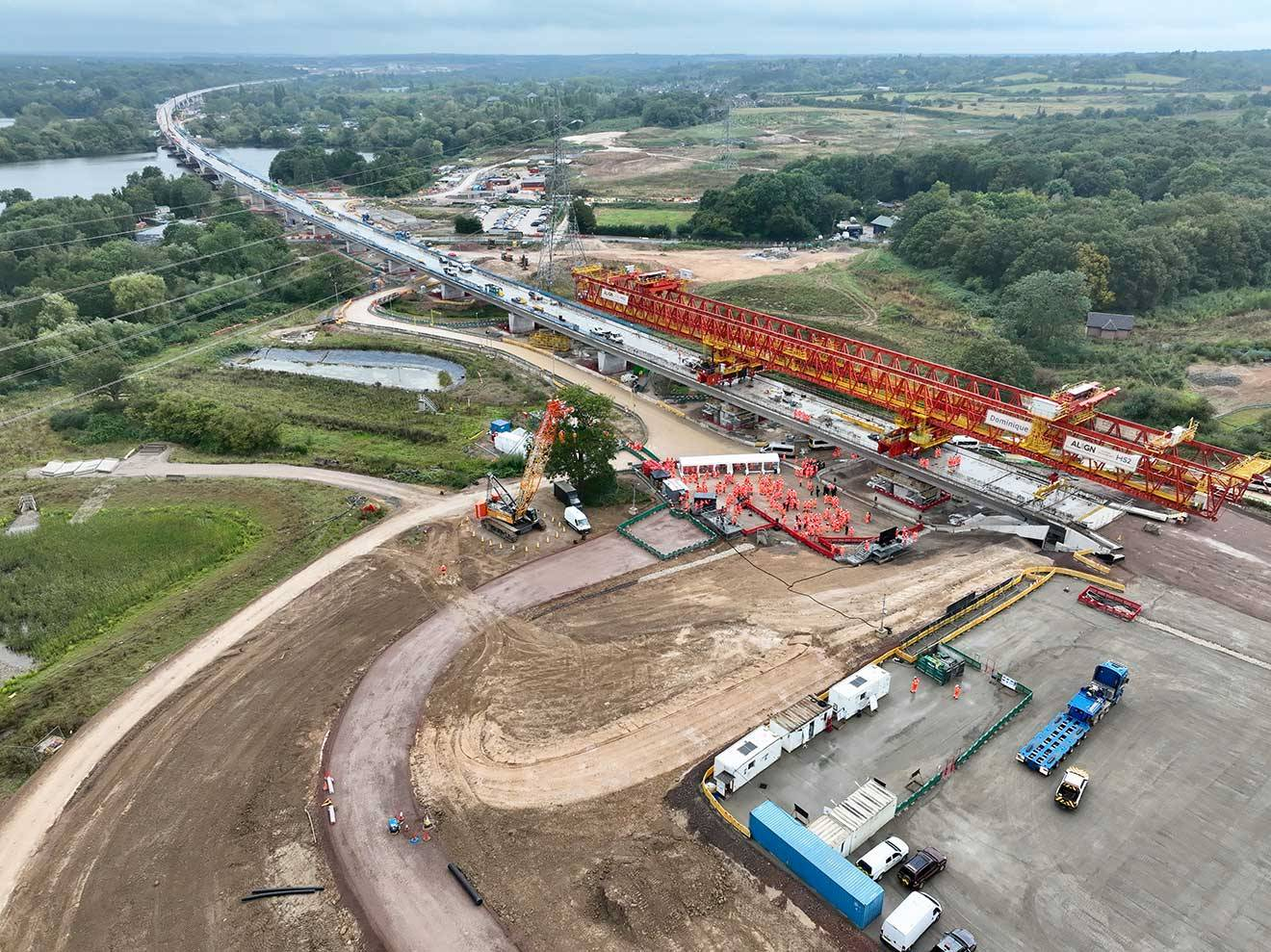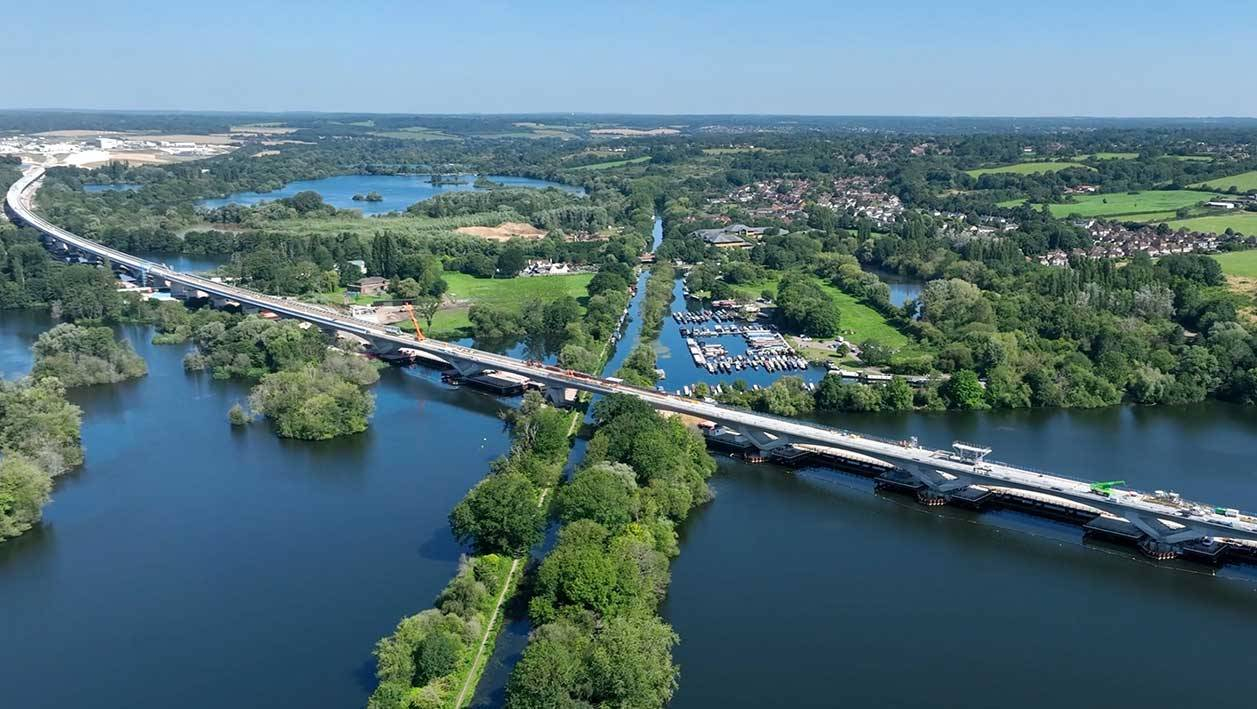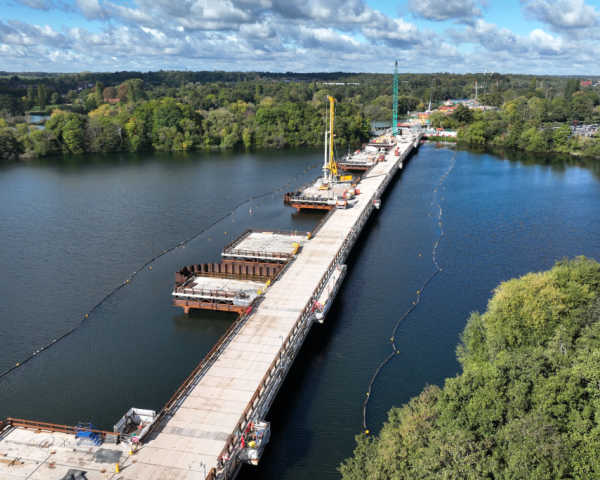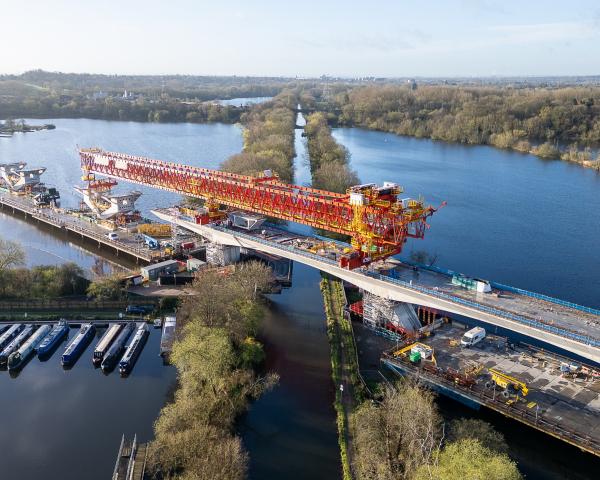
Last segment of HS2's Colne Valley Viaduct installed and becomes Britain's longest rail bridge
Contractors building the Colne Valley Viaduct for HS2 made history as they lowered into place its final deck segment in an operation that crowns it as Britain’s new longest rail bridge.

The gently-curved 3.4 kilometre (2.1 mile) long structure on London’s north-western edge stretches across the Colne Valley near the M25 motorway and the village of Denham. It will carry high speed trains running to and from the capital at speeds of up to 320km/h (200mph).
The viaduct’s completion means that the 3.3km Tay Bridge linking Fife and Dundee has finally ceded the crown of Britain’s longest rail bridge to HS2, a record it had held since 1887.
The Colne Valley viaduct’s construction is being managed by the main works contractor Align JV – a team consisting of Bouygues Travaux Publics, Sir Robert McAlpine and VolkerFitzpatrick. It is one of 500 bridging structures on the HS2 project which also include footbridges, drainage culverts and innovative 'green bridges' for wildlife.
Building work on the viaduct’s deck began in May 2022. Over the following 28 months a dedicated team of highly-skilled engineers used a massive launching girder to lower into place the bridge’s 1,000 uniquely-shaped deck segments.

Edging forward from north to south and supported on the viaduct’s 56 piers, the 160 metre long launcher used a balanced-cantilever method to lower deck segments into place to form half an arch either side of a pier before moving to the next pier to complete the arch span by repeating the process.
The 1,000 pre-cast segments are made on-site at a purpose-built factory. Each of the segments is uniquely shaped to enable the structure to curve as it carries the high speed line up to 10 metres above land and water across the Colne Valley.
Once the main civil engineering phase of construction ends, the factory and surrounding buildings will be removed and the whole area between the viaduct and HS2’s 10-mile tunnel beneath the Chiltern Hills just to the north will be transformed into an area of chalk grassland and woodland as part of HS2’s ‘green corridor’ project.

The viaduct’s construction will next move into the rail systems installation phase as it progresses towards becoming an operational part of the new high speed railway between 2029 and 2033.
Once open HS2 will carry reliable, high-speed trains between London and Birmingham, significantly reducing journey times and freeing up space on the existing mainline for more local and freight services. Major construction work on the project is now at its peak, with more than 30,000 people employed, and the programme will soon start the transition to its next critical stage – the awarding of railway and track contracts as development of the working railway takes shape.
The Align team, along with our supply chain partners VSL who operated the launching girder, have worked very hard to get us to where we are today, ahead of plan. Working together and as a truly integrated team that includes HS2, Align, our design partners, our supply chain colleagues and the local community, we have built the Colne Valley Viaduct which will be the iconic feature of HS2.
Loïc Menard Align Project Director

